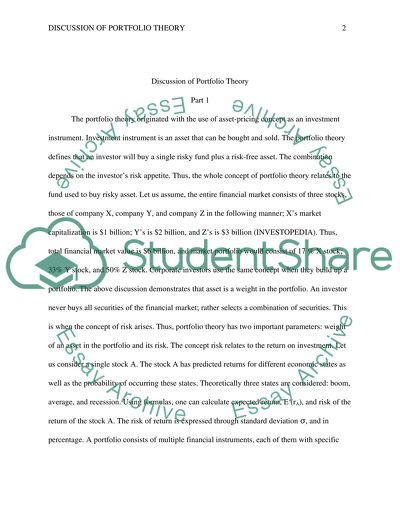Discussion of Portfolio Theory Coursework Example | Topics and Well Written Essays - 750 words. Retrieved from https://studentshare.org/finance-accounting/1477952-writer-can-decide
Discussion of Portfolio Theory Coursework Example | Topics and Well Written Essays - 750 Words. https://studentshare.org/finance-accounting/1477952-writer-can-decide.


